The annual round trip with steam from London to the Scottish Highlands and Penzance has had its ups and downs in recent years, but this year’s tour will go down in history as one of the very best of them all. Brian Sharpe reports on a classic trip with some commendable locomotive performances.
The Railway Touring Company’s tenth ‘Great Britain’ tour set off from King’s Cross in style at 7.38am on Saturday, April 29, behind LNER A3 Pacific No. 60103 Flying Scotsman.
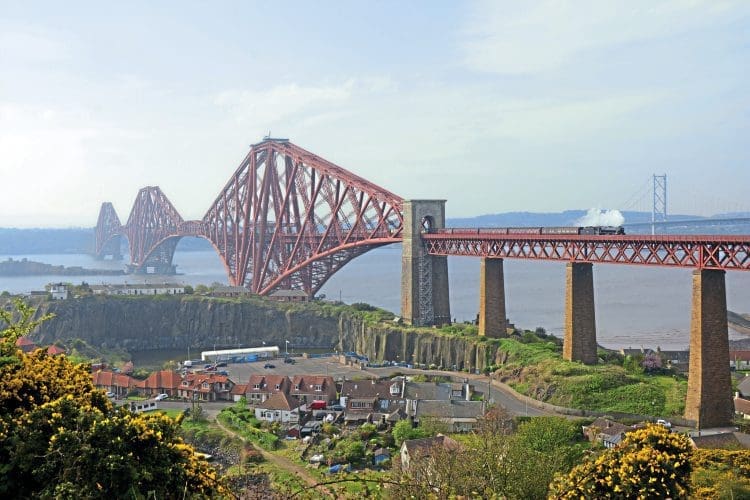
This was the A3’s first departure from the London terminus since its inaugural run after completion of its overhaul, on February 25, 2016 and fortunately the scenes of mass trespass by the public were not repeated on this occasion.
A competent and fortunately uneventful run saw an arrival at York three minutes early for a planned engine change.
Enjoy more Heritage Railway reading in the four-weekly magazine.
Click here to subscribe & save.
The rostered locomotive for the next leg to Edinburgh was LNER A4 Pacific No. 60009 Union of South Africa.
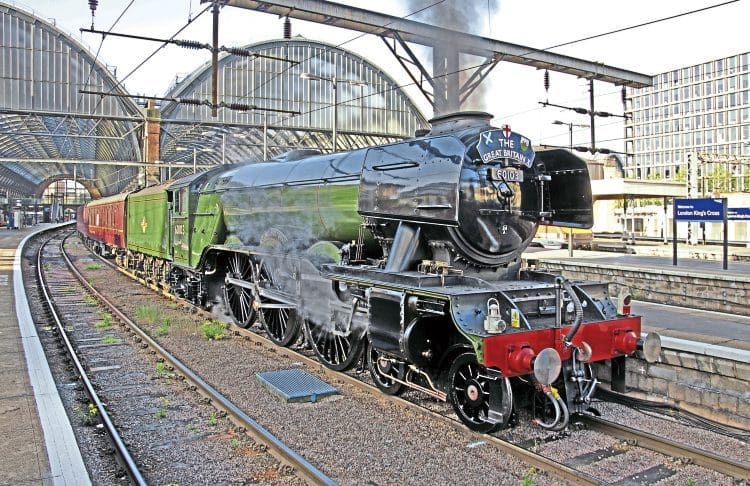
This engine had been running on the East Lancashire Railway the previous weekend, after completion of long-running repairs at Riley’s works, and had completed a successful main line test run on the Carnforth-Hellifield-Blackburn circuit on Wednesday, April 26, but further work was carried out and the A4 left Carnforth for York on the Friday.
However the engine suffered from valve problems en route and it was clear that the A4 was not able to take up its ‘GBX’ duties as planned.
In any case the engine was rostered for the Edinburgh-Inverness and Inverness-Glasgow legs but had fallen foul of gauging problems north of Perth.

It had already been decided that a ‘Black Five’ from Riley’s stable would have to stand in and No. 45212 had set off from Fort William where it was based for ‘Jacobite’ duties, along with No. 45407. Despite hopes that Scotsman could continue from York to Edinburgh, this was not possible and ‘GBX’ set off from York diesel-hauled.
Tackling the climbs
Sunday, however, saw plan B come into force with No. 45212 steaming out of Edinburgh through Princes Street Gardens and over the Forth and Tay bridges.
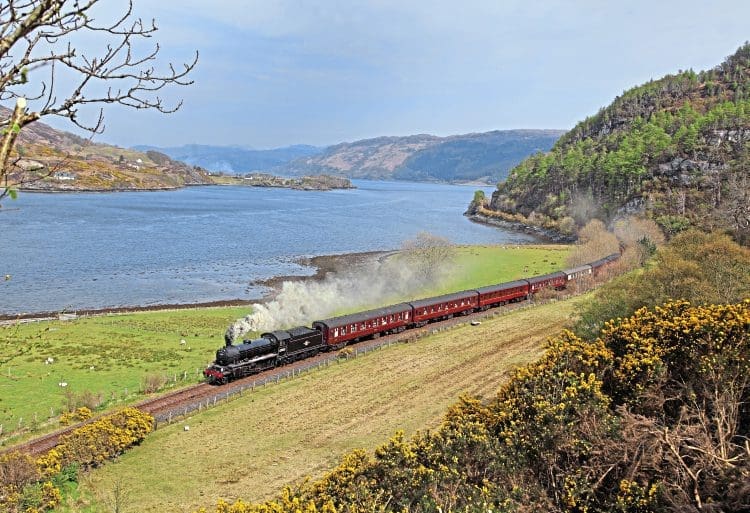
A diesel was again in charge from Dundee to Perth before NELPG’s LNER K1 2-6-0 No. 62005 was coupled inside the 5MT ready to tackle the climbs to Drumochter and Slochd on the Highland main line, which with two engines working well were topped at 41mph and 33mph respectively.
This year the shortened train made an out and back run from Inverness to Kyle of Lochalsh on the Monday with the K1 in sole charge of seven coaches.
Unlike previous years when departure has been at around 6am, the train set off at a very civilised 11.10am and with none of the apparently inevitable adhesion problems en route, No. 62005 turned in one of the best steam performances on the line in recent years in both directions.
The duo of Nos. 45212 and 62005 then took the train south over the Highland main line on Tuesday, May 2. After an unscheduled stop at Moy, the pair topped Slochd summit at 29mph and crested Drumochter at 48mph.

The ‘Black Five’ had been deemed out of gauge for Glasgow Central and so the K1 duly steamed out of Perth with 11 coaches in tow, but inevitably with a Class 47 diesel on the rear to provide assistance, particularly on the climb to Gleneagles. It would also be required to haul the stock out of the terminus on arrival.
One lineside fire
So far the weather had been dry, windy and increasingly sunny, but this was starting to become a problem.
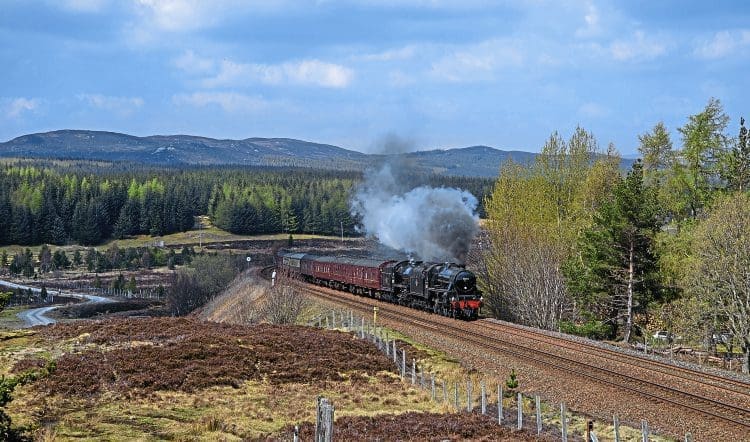
Only one lineside fire had been started so far, and that was while the K1 was coasting through Attadale on the Kyle line, but having seen no significant rainfall for several weeks, the authorities were increasingly concerned about the West Highland main line.
The train had been diverted at the last minute, to run single-headed to Fort William and this would have been beyond the capabilities of No. 62005. The diesel was added to the rear of the train again but the instructions were that it must take the lion’s share of the work to lessen the risk of the steam engine starting any fires.
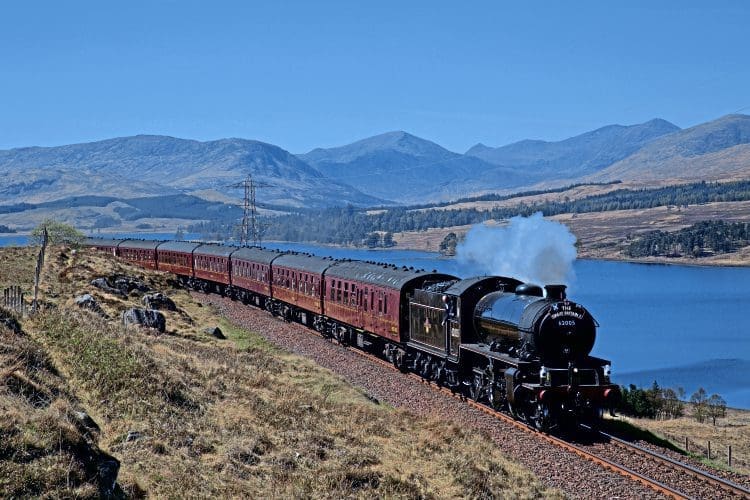
The Class 47 returned the train to Glasgow while the K1 remained at Fort William to take up its ‘Jacobite’; duties on the Mallaig line.
Diesel assistance was the order of the day again on Thursday, May 4. LMS Princess Coronation Pacific No. 46233 Duchess of Sutherland had arrived from Crewe and appropriately headed the train over Beattock and Shap to Oxenholme for the next overnight stop, but in dry, sunny and windy conditions, the crew had to hold the Duchess back a bit and let the diesel do much of the work.

West Coast’s maroon LMS Jubilee 4-6-0 No. 45699 Galatea took charge from Grange-over-Sands to Bristol on May 5, running via Crewe, Shrewsbury and Hereford, and with no diesel assistance south of Crewe, turned in an excellent performance.
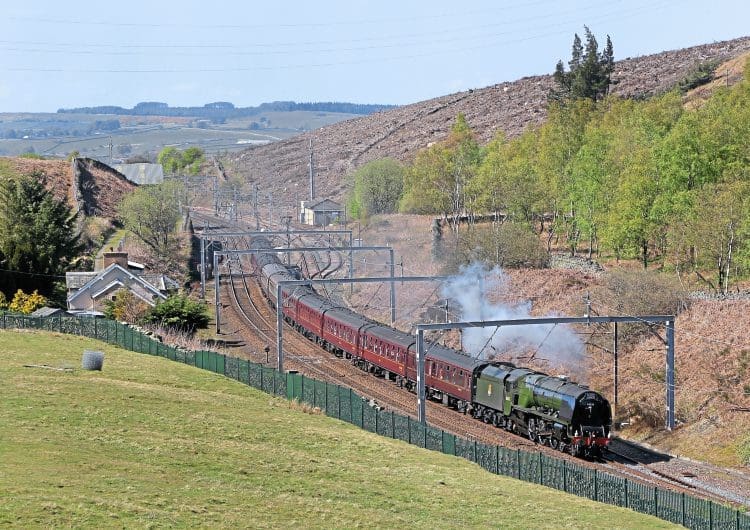
Another LMS 4-6-0, this time No. 46100 Royal Scot, and SR Bulleid West Country Pacific No. 34046 Braunton, still running as No. 34052 Lord Dowding, were rostered motive power on the Saturday for the Bristol to Truro leg of the tour.
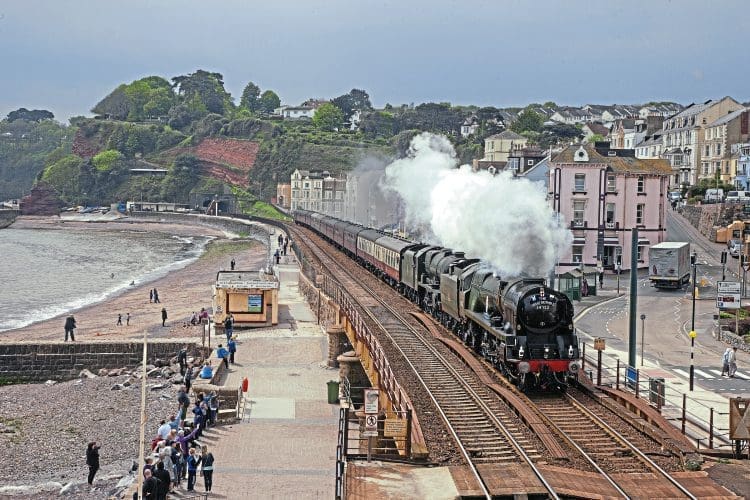
After turning on the turntable at St Blazey, the pair worked throughout from Penzance to Paddington on the final day of the tour, running via Bristol because of current gauging restrictions on the Berks & Hants line in the Up direction.
Highlights of the doubleheaded run were maintaining the HST schedule between Newton Abbott and Exeter and beating City of Truro’s time for the Exeter to Bristol section. ‘GBX’ had been a great success and showed that such a tour can still be done.

RTC, West Coast Railways, Network Rail and all the locomotive owners and support crews deserve congratulations on a job well done.
Read more News and Features in Issue 246 of HR – on sale now!
Archive enquiries to: Jane Skayman on 01507 529423 – [email protected]
Advert
 Enjoy more Heritage Railway reading in the four-weekly magazine. Click here to subscribe.
Enjoy more Heritage Railway reading in the four-weekly magazine. Click here to subscribe.











